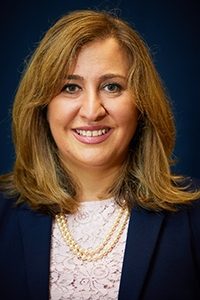COVID-19 posed immediate and unprecedented challenges to organizations providing intensive behavioral services in a congregate care setting to children and adolescents diagnosed with autism and intellectual/developmental disabilities. The evolving discoveries about the novel virus and how to combat its spread created daily, real-time triage needs at every level of human services organizations.
Congregate care settings have been particularly affected, prompting leadership teams at organizations like Melmark, which serves individuals with autism and intellectual/developmental disabilities, often accompanied by medical fragility, to strategically develop adjusted standards of care. In addition, the need for some individuals to now be served primarily at home, with others remaining in their residential placements, was a significant challenge requiring procedures to directly engage learners in a variety of environments. The sudden change in educational setting and delivery, need for remote caregiver support, and development of telehealth support structures posed unique challenges to education and residential staff.
Closing Day Programs
One of the earliest steps in mitigation was to close day programs (school and adult day) at all of Melmark’s service divisions in Massachusetts, Pennsylvania and North Carolina. This created new scenarios for education professionals as they worked to ensure the continuity of services to all individuals. Melmark’s senior leadership team enacted many layers of change to support health and safety protocols and to provide services to all individuals, regardless of their physical location, in evidence-based, best practice ways.
A Multi-Layered Approach for Home Instruction
For students whose instruction would now take place in a home environment, radical changes in service delivery were immediately needed. Some parents were thrust into primary instructional roles, if their child was not responsive to instructors via video. Students who could participate in remote instruction had to learn the nuances of interacting with their teachers in a virtual environment. Teachers learned to provide instruction and coaching remotely. Despite the abrupt onset of these changes, education teams provided a measured and methodical implementation of individualized telehealth/tele-educational services. Each member of the education team collaborated to ensure best outcomes, both for the students and staff.
1) Addressing issues of access – Staff and families were assessed for their access to and familiarity of use of computers and tablets. Organizational Zoom accounts were made available to departments and to individual employees so that telehealth/tele-educational services could be delivered in a secure online setting. In some cases, equipment was provided to families to ensure communication could occur. In other cases, collaboration with school districts secured devices for use. Finally, the organization purchased cameras, laptops, and hotspots for families and for staff in need.
2) Training of staff in the technology for and the provision of remote support – Staff members learned how to use new programs and applications to support families in instruction. In some cases, staff directly provided telehealth/tele-education to the individual served. In other cases, family members provided that direct support to the individual in partnership with staff, who trained parents on the use of technology and provided instructional coaching.
3) Check-ins with families – All families received check-ins multiple times per week, regardless of the format of remote educational support. This enabled discussion about behavioral challenges, skill programs that were posing difficulties, general concerns, and safety concerns. It also provided a context for educational staff to share information about the use of schedules and visual cues, pacing of instruction, and favorite activities. Scripts and task analyses were created to help families understand the structure of each educational session.
4) Individualization of approach for active instruction – Perhaps the greatest lesson was the need for individual solutions. Every individual and each family required individualized and tailored plans. An analysis of goals and programs was a fundamental first step. From a skill development perspective, prioritization was given to the maintenance of skills, to ensure that abilities would not be lost in the transition from active on-site programming. Given the propensity for individuals with ASD to lose skills in the absence of practice, it was important to identify the skills that would be consistently reviewed. It was also important to identify programs or skills that might be modified or placed on hold until the resumption of the on-site educational program. For example, it might not make sense to continue working on skills that would evoke challenging behaviors or on skills that were not going smoothly. Examples of goals that might be modified in light of safety concerns included things such as the introduction of novel foods to a selective eater. Initial instructional goals included rapport building, eye contact, and attending/responding to a virtual teacher.
Motivation was another element of individualization that was essential to address. Teachers and instructors worked diligently to share information about how the individual was motivated in the school/program environment. In this way, parents could ensure those reinforcers/preferences (or similar ones) were available during remote learning time.
Teachers integrated new goals into many learners’ lessons. In the beginning of the stay at home period, teachers provided visual information about school closure, and addressed newly needed skills such attending to virtual instruction. Over time, instruction embedded more focus on health and safety skills. These included: the proper wearing of a face mask, toleration of prolonged periods in a mask, thorough hand washing, appropriate social distancing, and engagement during virtual communication.
5) Flexibility in considering how education is delivered – Families were navigating other stressors and adjustments in addition to the changes in instruction for their child with autism. Many families were working from home or staying home to care for young children; some were juggling both. In many homes, other children were also receiving remote instruction from their schools. Parents’ ability to provide instruction or coaching was sometimes limited by these demands. To ensure continuity of education for all students, staff designed individualized programs for each family. In some situations, it was easier to integrate instruction into activities of daily living or into recreational times. It was also necessary to support families in realistically assessing what was possible, given all of the other variables and circumstances impacting the family.
Guiding Principles
Perhaps the greatest lesson amidst COVID-19 has been the reinforcement of our foundational roots of individualizing our instructional goals, providing support to families, and ensuring that staff members are prepared for and skilled in the delivery of services. In the future, we will have the lessons of COVID-19 to guide us in planning for remote instruction and for prolonged periods of at-home stays. The experience of COVID-19 has reinforced the importance of collaboration, communication, and flexibility when providing support to families.
Summary
COVID-19 continues to challenge the care of the most vulnerable. The need to provide ongoing services for students with autism and intellectual/developmental disabilities with medical fragility and/or behavioral challenges necessitates a constantly evolving response. Action plans must continue to be considered for all levels of the organization, with the best interests and safety of the individuals served remaining top priority.
The lessons of COVID-19 have prepared us for the continuation of care during public health threats and during other crisis situations. It has also stretched organizations to provide services, trainings, and supports in remote contexts when possible. In this way, services were uninterrupted, maintenance of skills was assured, and families were supported in managing these unprecedented changes in the schedule, location, and instructional context for service delivery.
Rita M. Gardner, MPH, LABA, BCBA is the President and CEO of Melmark, a multi-state human service provider with premiere private special education schools, professional development, training and research centers. Ms. Gardner leads with a mission-first focus on providing exceptional evidence-based and applied behavior analytic services to every individual, every day. Through her robust background in public health, as well as her business acumen, Ms. Gardner has guided Melmark’s entire team on a clear, mission-focused path to ensuring the health and safety of the individuals served and staff employed by the organization.
Helena Maguire, MS, LABA, BCBA, is Executive Director of Melmark New England. Jennie Labowitz, MS, NCSP, BCBA, is Senior Director, of Children’s Services at Melmark Pennsylvania. Silva Orchanian, MEd, BCBA, LABA, is Senior Director of Day Services at Melmark New England. Mary Jane Weiss, PhD, BCBA-D, is Senior Director of Research at Melmark.
For more information about Melmark, visit www.melmark.org.










